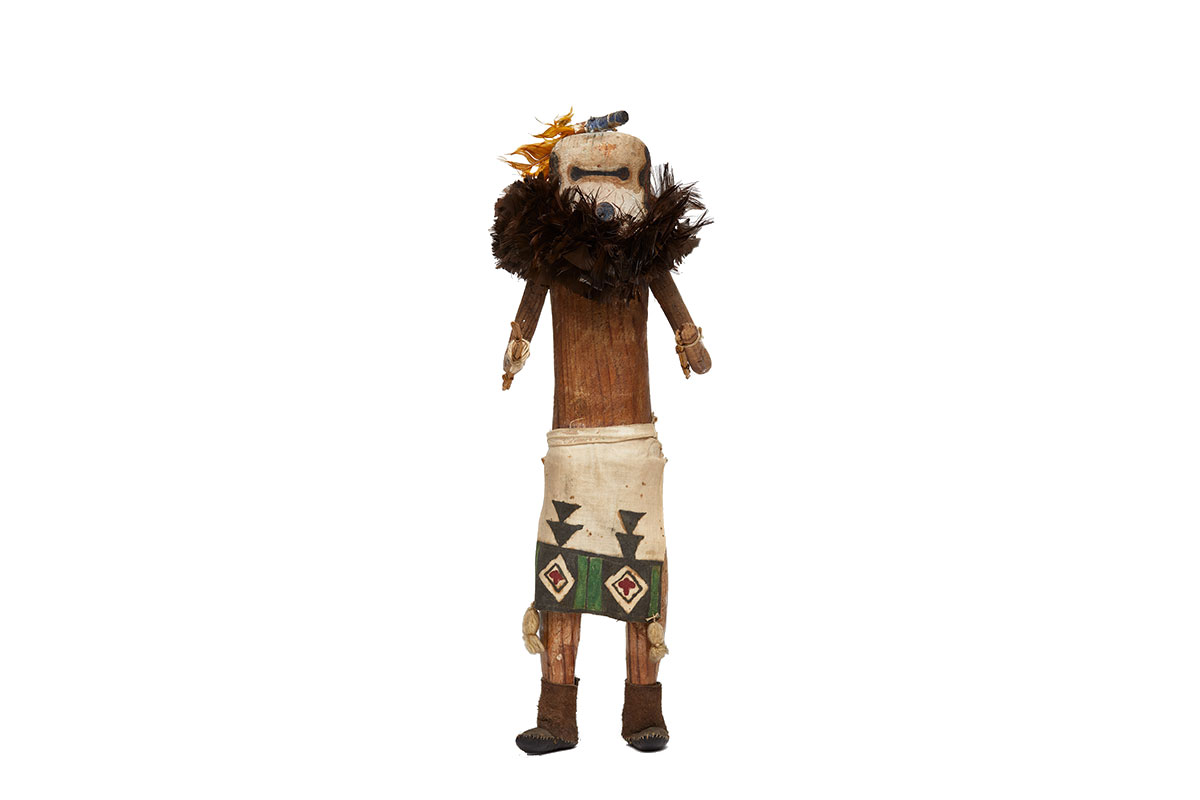White Salimopiya Katsina
New Mexico
early 20th century
wood, cloth, hide, paint, turkey feathers
height: 14 ½"
Inventory # S3903
Sold
PROVENANCE
Private collection, Scottsdale, AZ
RELATED EXAMPLE
Brooklyn Museum, New York, Cat. No. 03.325.4651 – See: Fane, Diane. Jacknis, Ira. Breen, Lisa M. Objects of Myth and Memory: American Indian Art at the Brooklyn Museum. Seattle: University of Washington Press, 1991, pp. 106 - 113 for a kachina is known as a “Vanderwagen doll” after the trader at Zuni, Andrew Vanderwagen, who commissioned several carvers to create a substantial number of these dolls. Many of the Vanderwagen dolls were purchased by the collector Stewart Cullen, and are now in the Collection of the Brooklyn Museum.
Haberland, Wolfgang. Kachina-Figuren der Pueblo-Indianer Nordamerikas aus der Studiensammlung Horst Antes. Karlsruhe: Badisches Landesmuseum, 1980, pg. 51, pl. 53
In contrast to the solid appearance of Hopi katsina dolls, Zuni figures tend to be larger in size and of elongated shape. Many feature articulated arms, fixed with wooden pegs or nails and clothing made from cloth rather than the painted forms we see on Hopi dolls. A wonderful example of this can be seen in this representation of Kohan’ona, or White Salimopiya. Dressed in a richly painted cotton dance kilt, the figure is holding the characteristic yucca whips with which the katsina performers chasten onlookers and chase away evil. This doll is associated with the Northeast, differentiated from other Salimopiya by the white colour of their bucket mask. In place of ears, the mask is painted with two colourful circles representing flowers and features the typical glasses-like shape across the eyes. Salimopiya is known as Sipikne, or Zuni Warrior, among the Hopi.

